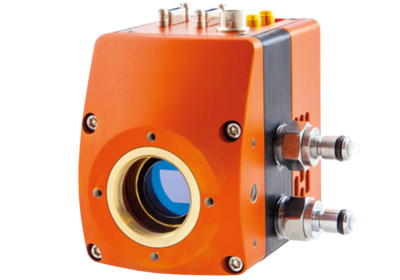

Polymeric nanoparticles have shown promise for siRNA delivery to cell wall–free plant protoplasts, but polymeric nanoparticles have not been shown to traverse the cell wall for gene silencing in intact plant cells ( 8). Several previous studies take advantage of nanomaterials to deliver plasmid DNA ( 13– 17) or proteins ( 18) to intact plant cells. While nanomaterial-mediated delivery of RNA and therapeutics has been extensively explored in animals, its potential for plant systems remains understudied ( 12).

Similarly, Agrobacterium-mediated delivery is also limited to use in certain plant species, often yields random DNA integration that can adversely and unpredictably affect the cell operation ( 10), results in constitutive expression of siRNA (thus limiting temporal control over gene silencing), and can be difficult to scale or multiplex for high-throughput or multigene target applications ( 11). Viral vectors present the advantage of directly and strongly expressing the siRNA without relying on plant transformation however, most viruses are limited in their host range ( 8), often do not result in uniform silencing of the gene (and thus levels of silencing can vary between plants and experiments) ( 9), and might inadvertently result in the suppression of nontarget genes. Consequently, viral vectors combined with Agrobacterium tumefaciens delivery is the preferred method to deliver siRNA into intact plant cells. However, plants have a cell wall that presents a barrier to exogenous biomolecule delivery, whereby the plant cell wall size exclusion limit is ~5 to 20 nm ( 7). One common way of using PTGS in plants is to directly deliver siRNA molecules into cells. PTGS has shown to be a prominent tool in plants for genotype-phenotype mapping ( 2), discovery of new biosynthetic pathways ( 3), increased production of valuable small molecules ( 4), understanding of the functions of genes and proteins ( 5), and conferring of resistance to plant diseases ( 6). In PTGS, small RNA molecules-microRNA or small interfering (siRNA)-direct enzyme complexes to degrade mRNA molecules, hence suppressing their activity by preventing translation. RNA interference (RNAi) is sequence-specific inhibition of gene expression at the messenger RNA (mRNA) level and can consist of either transcriptional gene silencing (TGS) or posttranscriptional gene silencing (PTGS). Consequently, less than a dozen complete biosynthetic pathways are known for plant natural products that have been reconstituted heterologously, compared to the ~1000 known biosynthetic pathways in bacteria and fungi ( 1). Plant biotechnology is currently limited by the cost, ease, and throughput of methods for probing plant genetics and by the complexity of plant biosynthetic pathways. Ultra high intrascene dynamic range - 70dB.Plants are central in providing more than 25% of our most clinically relevant drugs, are at the core of our sustainability efforts, and will benefit from genetic engineering to feed our growing population in the midst of climate change. < 50 electrons readout noise in high gain - Enables highest VIS-SWIR detection limitĬooled to -20☌ - Enables low dark current for longer exposures The Ninox 640 also features an on-board intelligent 3 point NUC which will provide the highest quality images.ġ5µm x 15µm pixel pitch - Enables highest resolution VIS-SWIR image This new feature On-board Automated Gain Control (AGC) will enable clear video in all light conditions.

Available with a 14 bit CameraLink output, the Ninox 640 will run from 10 to 120Hz enabling high speed digital video with intelligent auto AGC. With TEC and liquid cooling to -20☌ the Ninox 640 reduces dark current to ~1,500e/p/s, allowing longer exposures.


 0 kommentar(er)
0 kommentar(er)
